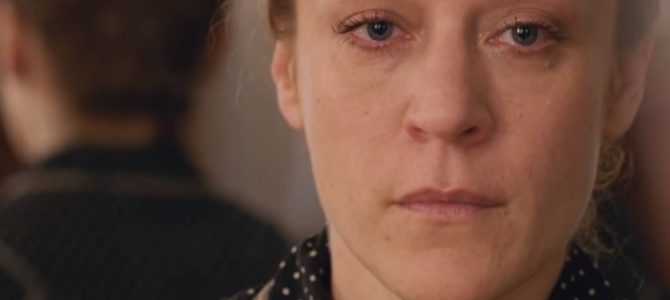A unique feature of the Lizzie Borden murder case is that the feminist left doesn’t try to exonerate the 32-year-old spinster. They accept that Borden was guilty of hacking her stepmother and father to death with an axe in Fall River, Massachusetts in 1892. Instead, the feminist left has used the killing to score political points against Victorian-age patriarchy.
The first film to address this was “The Legend of Lizzie Borden” (1975), starring, of all people, “Bewitched’s” Elizabeth Montgomery. The film hinted at an incestuous relationship with her father (at times she kissed him on the lips), but her main motive was greed. She feared that her father’s inheritance would go to her hated stepmother.
The point of the film was how the 19th-century patriarchal belief that upper-class females were too delicate for such carnage enabled Borden to get away with it.
The latest entry, “Lizzie” starring art-house actress Chloe Sevigny, also accepts that Borden, assisted by a sexually abused maid (a lip-quivering Kristen Stewart), committed the murders—and, like the Montgomery version, in the nude. The film plays on the lesbian angle, in which Borden and the maid were caught having sex by the father or stepmother. There were rumors during her life and beyond that Borden, who never married, was gay.
This theme was first explored by mystery writer Ed McBain, who, in his 1984 novel “Lizzie,” had Borden unhinged by the discovery then hacking her parents to death. Sevigny’s film doesn’t confine itself to the gay theme, but incorporates it into one of many motives all centering on her father’s patriarchal control. Yet the film never really convinces the viewer about why, then, she killed her stepmother also.
The film is designed to celebrate Borden’s 18 axe blows to her stepmother and the 10 or 11 to her father as feminist empowerment. For this to work, the film-makers follow the time-honored tradition of making the villain of the piece, her father, so detestable that any violence done to him, no matter how savage, is justified.
As slimily portrayed by Jamey Sheridan, the father is indeed detestable—a patriarch who capitalizes on his power. He sexually abuses the maid, controls every aspect of Lizzie’s life, hacks to death her one source of joy, her pigeons, and denies her financial security by refusing to leave her his inheritance.
The film-makers symbolize her confinement by magnifying every sound in the house and darkening the rooms. The home comes across as less a dwelling place and more a prison.
“Lizzie” is pitched to the politically correct crowd, with their views that murder is justified if it is committed by the oppressed. To do this, the film departs from key facts. Although there were rumors that the father sexually abused Lizzie, there is no proof that he did so with the maid.
It was never confirmed that the maid, Bridget Sullivan, was gay, either. Sullivan left the home after the murders and married. She was upstairs during the murder of the stepmother and at the very least witnessed it. On her deathbed, she allegedly told her sister of altering her court-room testimony to protect Borden out of friendship, but made no mention of a sexual affair.
Although the film portrays her as shell-shocked, Borden’s behavior after the murders and during the trial was hardly admirable. She did not appear distressed in the courtroom when the forensics of the murders was discussed. Indeed, many in the courtroom noted that she appeared bored.
After the trial, Borden finally inherited a sizeable amount from her father’s mother. Her use of it—moving into a mansion with a staff of cooks and servants, and giving lavish parties—implies that simple greed motivated the murders.
But such matters do not fit the politically correct narrative. The film’s attempt to justify what were savage murders by any standard shows just how cold-blooded some on the left have become.









